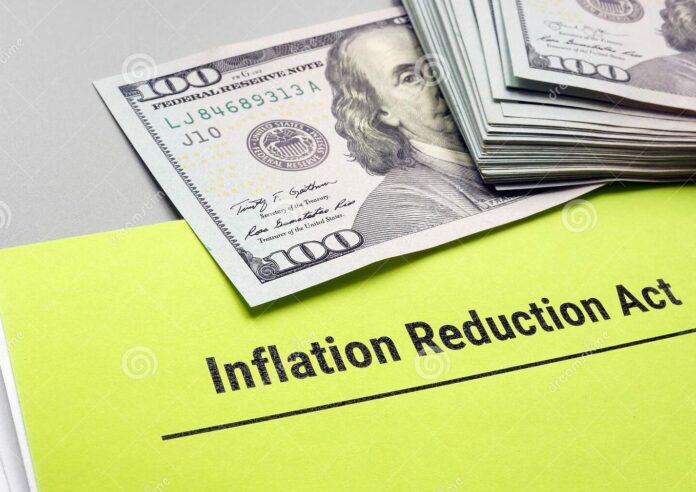The United States’ two houses of Congress have just passed the Inflation Reduction Act. It’s a bill about climate change that never mentions it in the title.
In the bizarro world that is Washington, this makes perfect sense. Touted as America’s newest effort to fight climate change, the bill includes provisions on tax reform and reporting, prescription and single-source drug pricing and regulation, medicare reforms and more before it even begins to look at items somewhat related to mitigating the climate.
For example, it isn’t until page 288 of a 755-page bill that it talks about the treatment of contracts pertaining to energy storage which one could conceivably argue is somewhat climate change related. But finally, three pages later begins the meat and potatoes of actions on climate change when it talks about new solar and wind energy credits.
In my quick read, I’m not even sure that there is a lot of content related to inflation reduction which is in the title of the bill, but I guess that’s apt for a Washington piece of legislative legerdemain.
Having said all that, the meat and potatoes of this new act pertaining to energy and climate change look pretty good. It provides tax incentives to address nuclear power, electric vehicles (EVs), energy efficiency, and renewable energy infrastructure. Experts believe the end goal of a 50% emissions reduction from 2005 numbers by 2030 may now be possible for the country. More than likely, however, the goal will not be met although significant progress will have been made because of the initiatives in this legislation.
The approach by the U.S. is far different than that by Canada in addressing emissions reductions. Canada is using an accelerating price on carbon pollution as a market mechanism for reducing emissions. The U.S. is using tax credits, deductions and rebates covering all kinds of initiatives beginning with the capture of carbon emissions and including developing clean fuel alternatives to gas and diesel. Emissions from existing thermal power plants running on coal and natural gas are currently exempted from any penalties. But there is a price and penalties for errant methane emissions.
Clean energy and efficiency incentives include money for home energy audits, retrofitting of windows and doors, upgrades to heating and cooling, installation of solar panels, purchasing and installation of heat pumps, biomass stoves, and improvements to building envelopes for energy conservation. Clean vehicle credits are offered for purchases of EVs, and the installation of charging stations.
Money is set aside for grid modernization and the manufacture of components for renewable energy covering solar, onshore and offshore wind, and battery storage. Critical minerals to support battery and renewable energy development are catalogued with incentives provided for the sourcing of these domestically or within North American trading partners. Funds are available for special climate programs where Americans have been affected by extreme weather, including federal assistance for climate resilience for indigenous people. There are even regulations and guidance for the hiring and training of employees within these nascent industries with fair wage guarantees.
In all its 755 pages, The Inflation Reduction Act covers $370 billion in investments which sounds like a lot but is far less than early iterations of President Biden’s proposed legislation which at one point exceeded a trillion dollars. Nevertheless, it is a significant down payment on climate change action by the country that is the second largest greenhouse gas emitter on the planet.
So I give the U.S. a passing grade in finally getting this done.

















[…] aggressive moves come just a week after the signing of The Inflation Reduction Act with hundreds of billions earmarked for nationwide climate change mitigation and adaptation […]
[…] Sandia’s use of supercritical CO2 (the gas under very high pressure) is more than just happenstance. Supercritical CO2 is chemically stable, non-flammable, non-toxic, and should increasingly be available as carbon capture projects increased promoted by incentives and subsidy programs contained within the recently US-passed Inflation Reduction Act. […]
[…] But what is available to address the 93 million plus that are already built? The misnamed Inflation Reduction Act contains a number of programs for existing homes and commercial businesses. Some of these programs […]
[…] How can governments help to make every eligible home go solar? One would think that the recent U.S. Inflation Reduction Act (IRA) would stimulate widespread adoption. But before I go on a rant, I will let Jane tell the […]